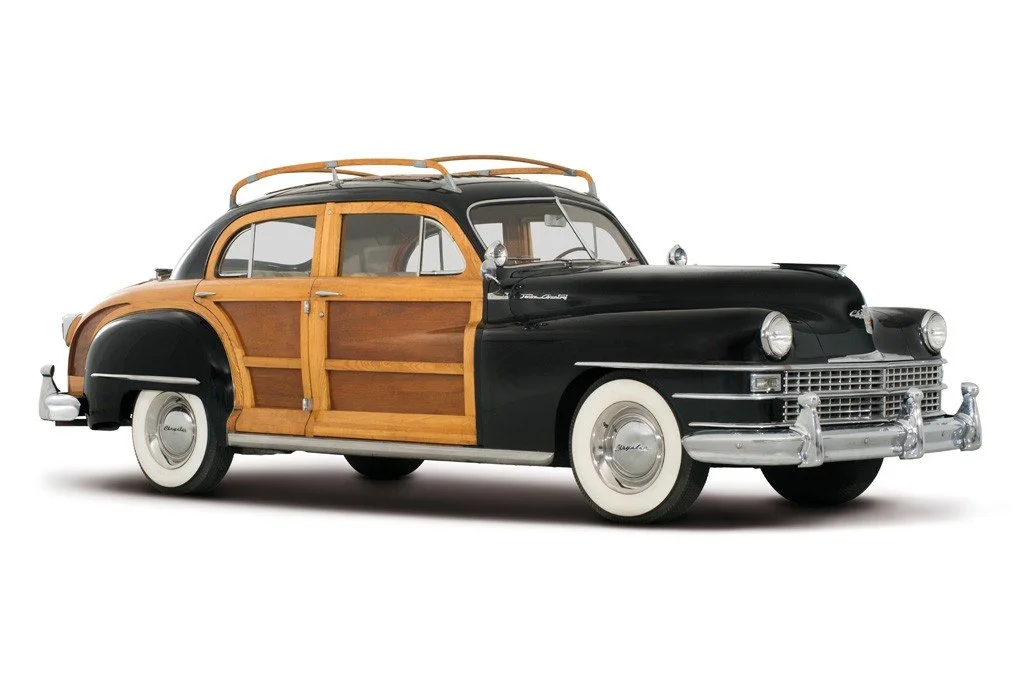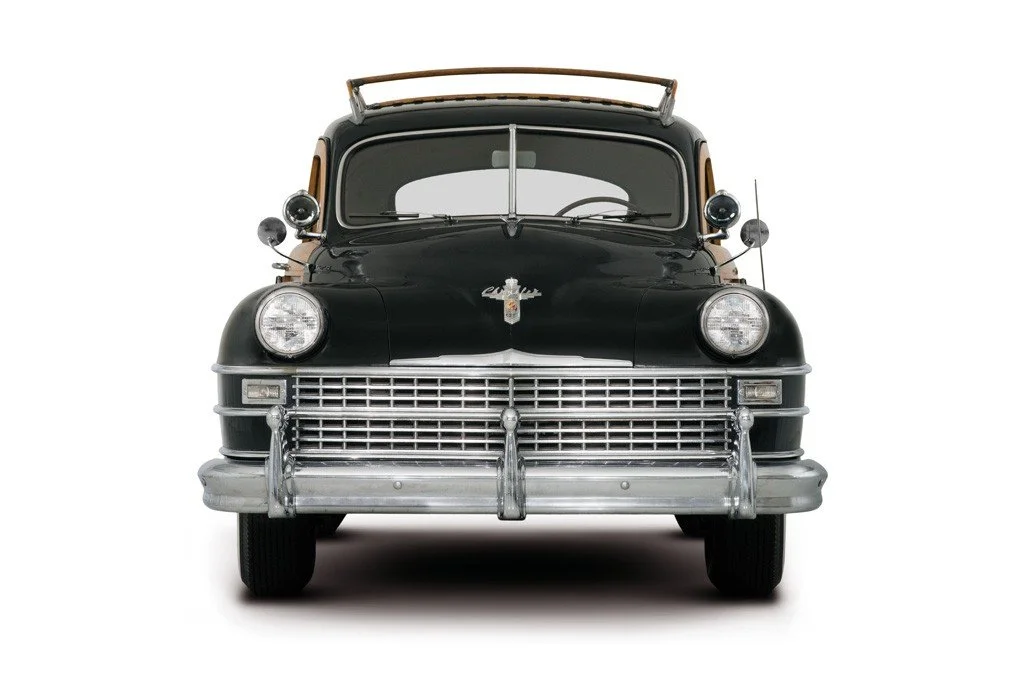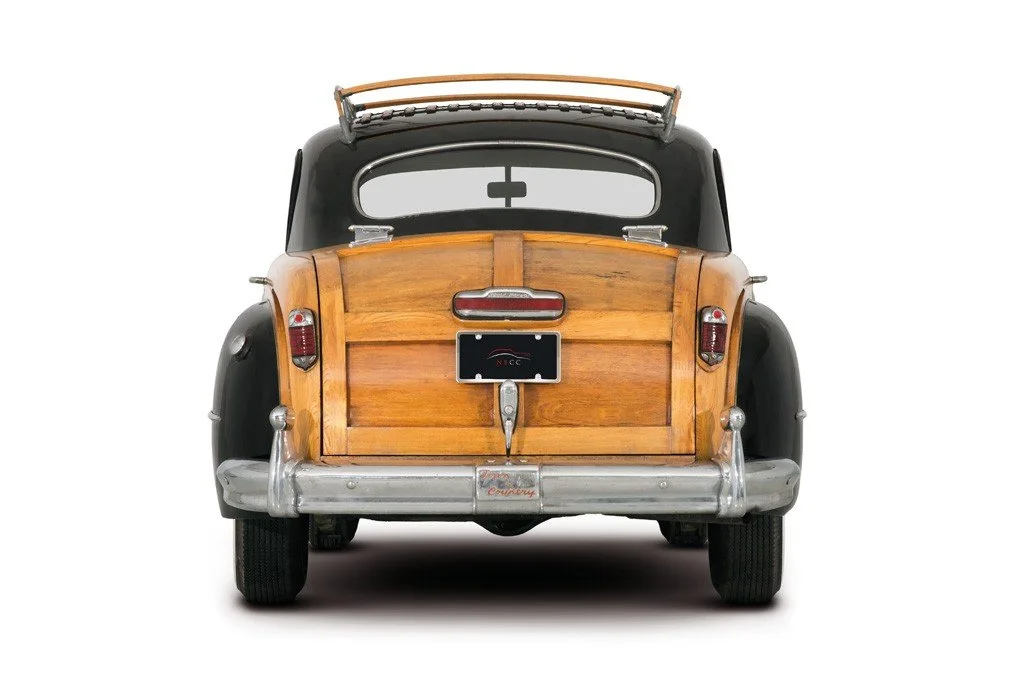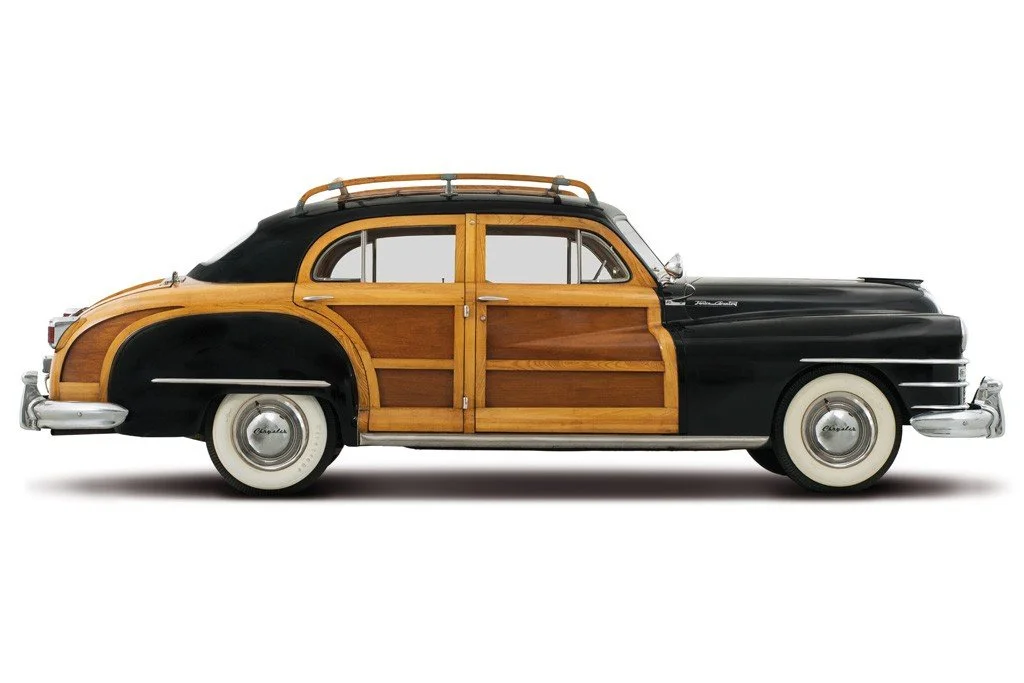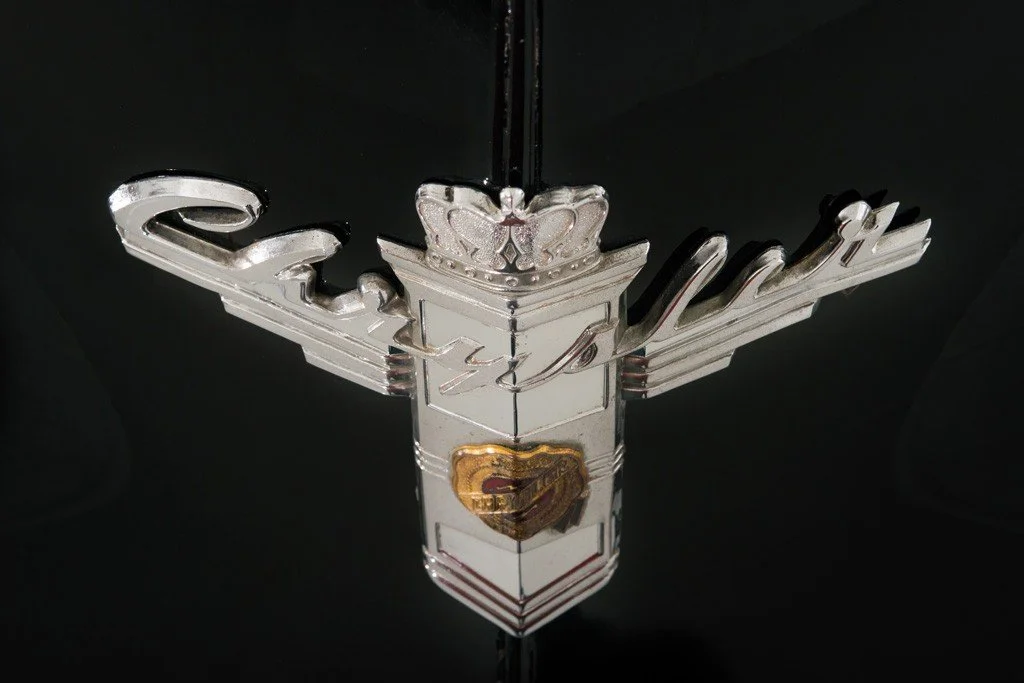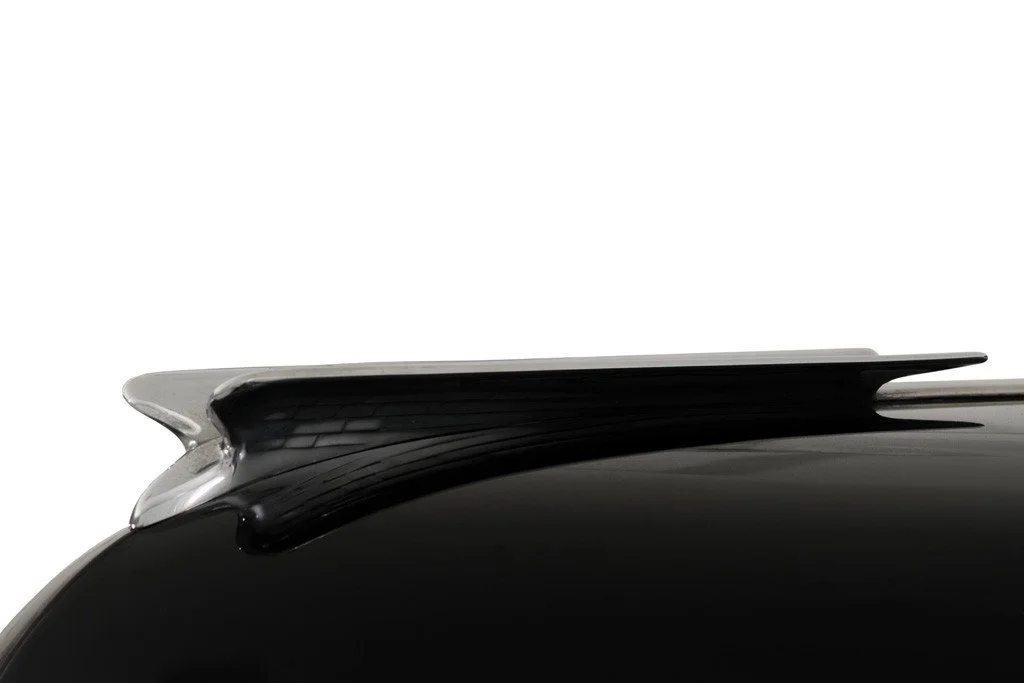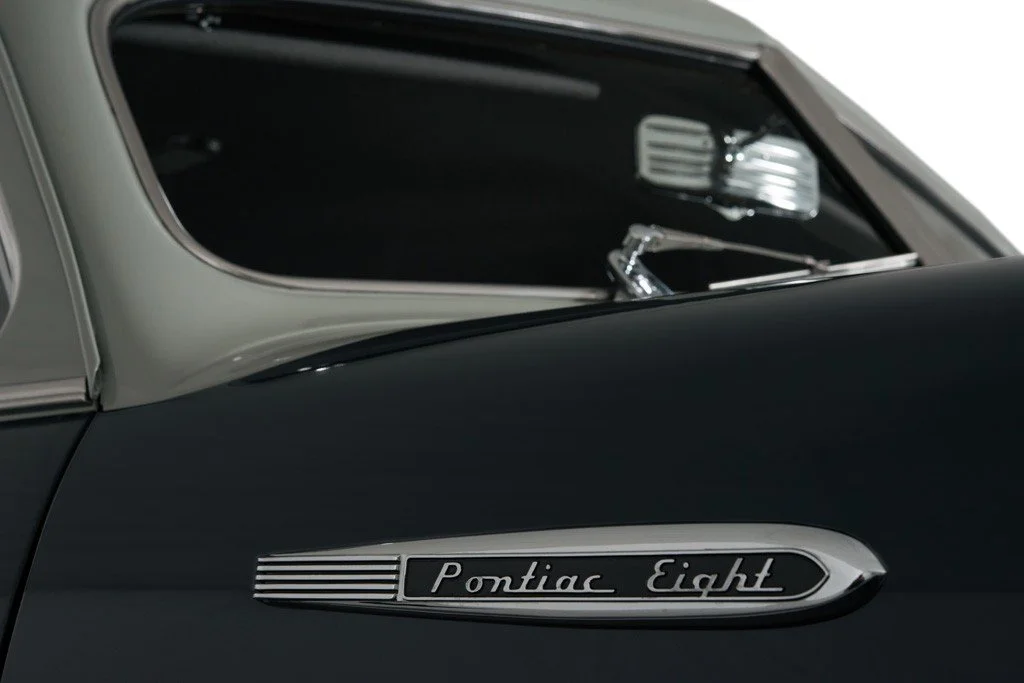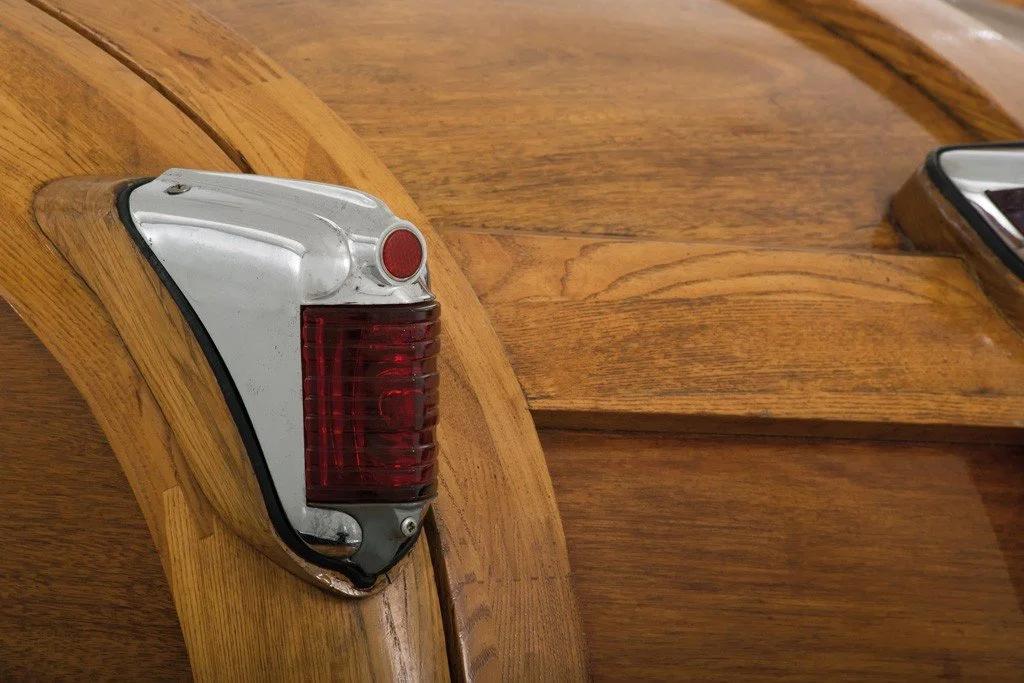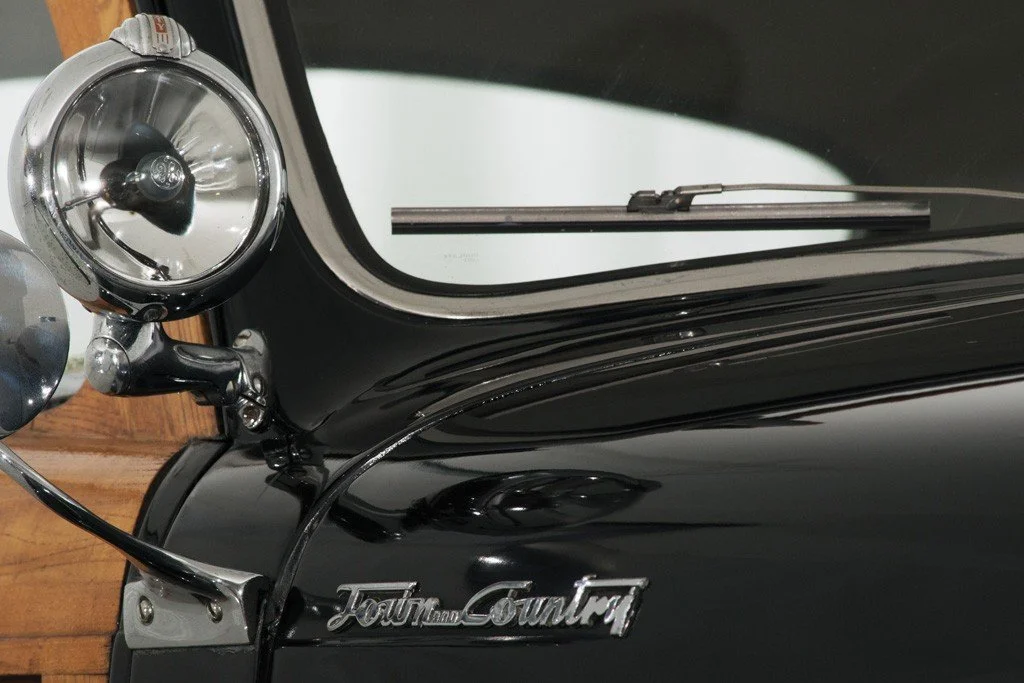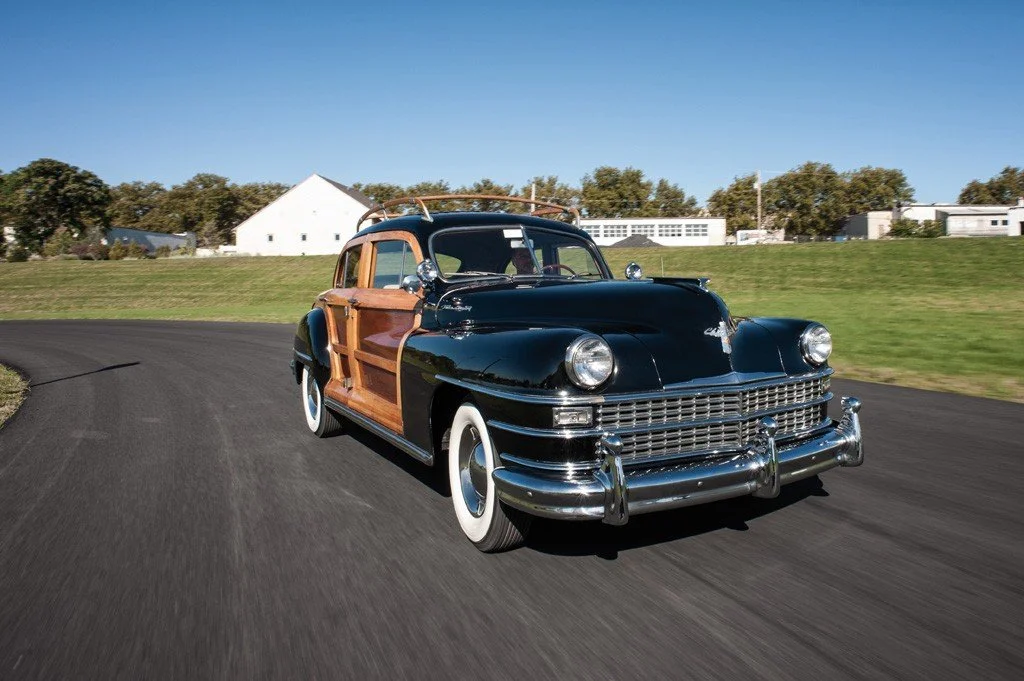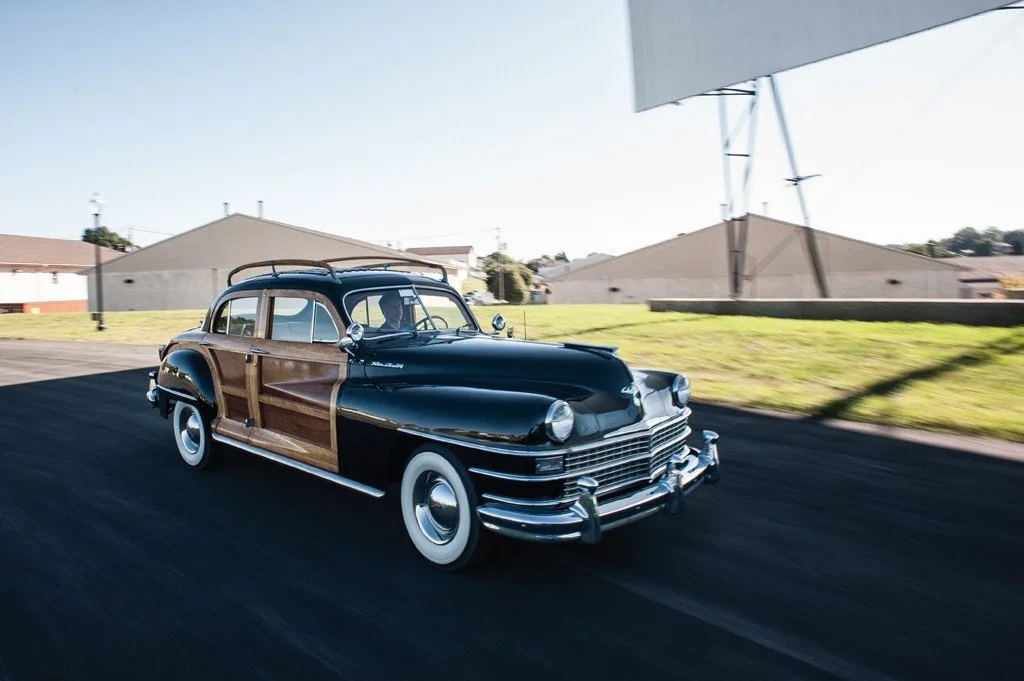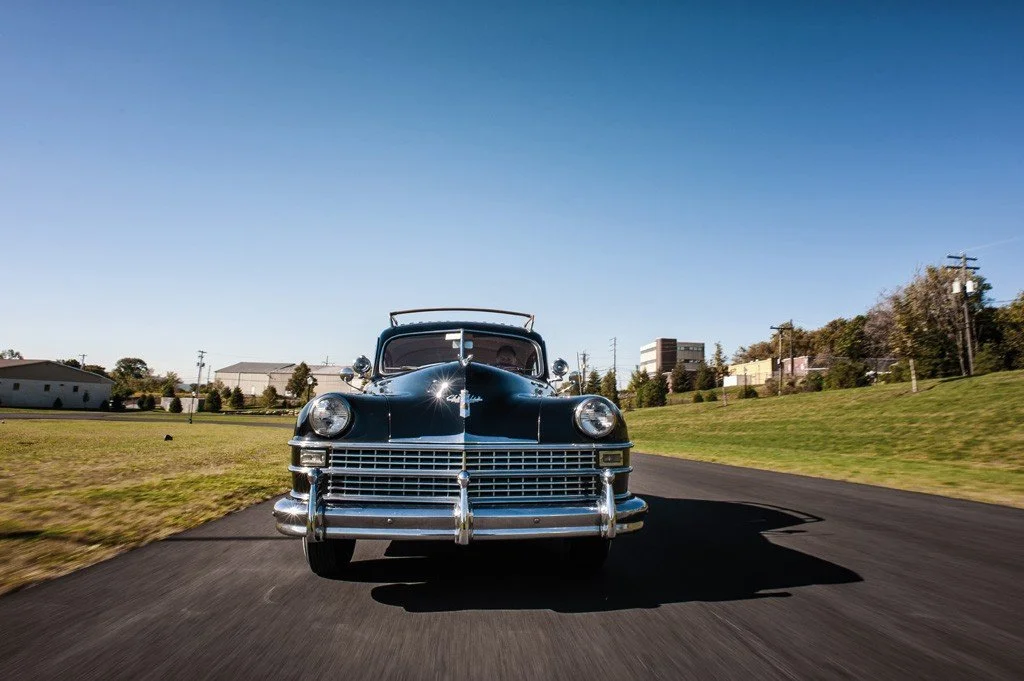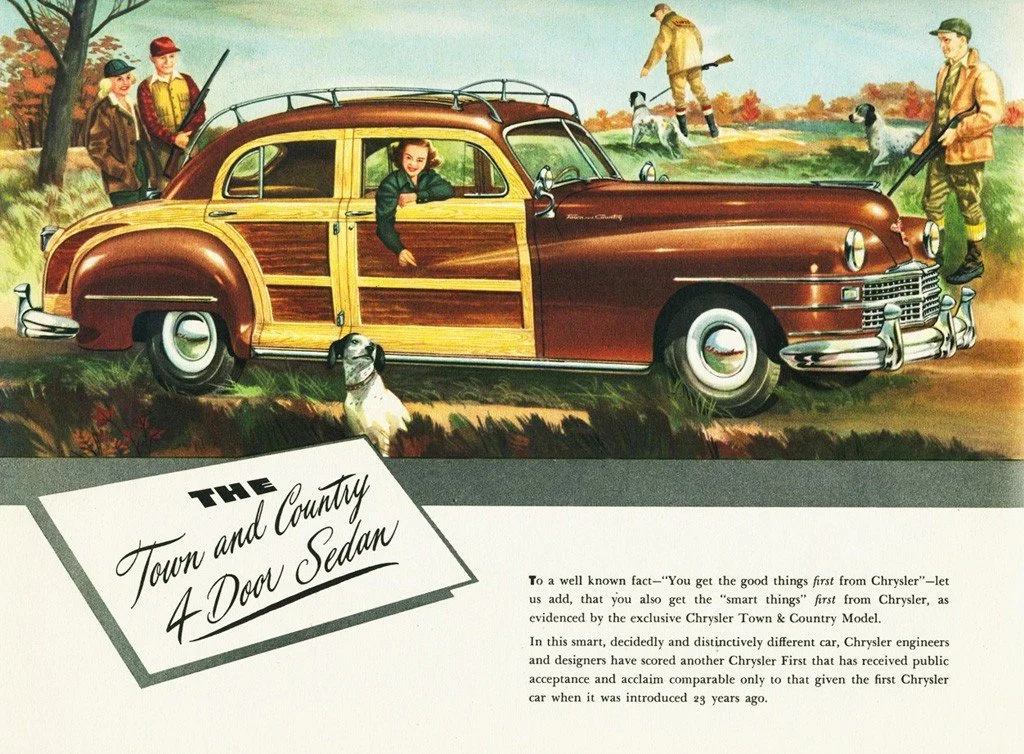-
The Chrysler Town and Country represents one of the classics of excellence in the world of American historic cars. It would be unthinkable for the famous Town and Country not to be included in a collection of US vehicles of the thirties and forties. The example in the Nicola Bulgari Car Collection is a 1947 model in the Windsor 4-door Sedan version. It belongs to the Series Six, having a six-cylinder inline engine, and joined the collection in 1998.
Between 1946 and 1949, 12,000 Town and Country models were produced in every body style, of which only 2,029 in the 4-door Sedan version.
Its restoration concerned only minor “cosmetic” work to the paintwork, wood and interior carpet, thanks mainly to the incredibly low mileage of this Town and Country: it has driven only 23,000 miles from when it left the Chrysler plant back in 1947! This Chrysler is like a time capsule, perfectly preserving the elegance and style of the best American automobiles of the forties. -
Company
Chrysler CorporationWheelbase
121.5inInterior trim
Beige leather/clothBrakes
front and rear drumsMake
ChryslerLength
210.7inEngine
inline 6 - 250.6cidTires
7.00x15Model
Windsor (C38) Town and CountryWidth
77.7inCarburetor
Carter 1-barrelOriginal Price
$2,366Body style
4-door SedanWeight
4090lbsHorsepower
114hp @ 3600rpmProduction
2,751Model year
1947Exterior paint
BlackTransmission
Fluid-Drive 4-speed semi-automatic -
The first Chrysler Town & Country was a wood-bodied, barrel-back sedan in the 1941 six-cylinder Royal line. In contrast to most wood-bodied utility vehicles, Chrysler’s Town & Country had lavishly-varnished wood inside and quality upholstery. Chrysler Corporation General Manager David Wallace believed that an upscale production-based automobile would attract wealthy buyers to Chrysler showrooms. He desired a sophisticated automobile, one elegant enough for city and chauffeur driving yet sufficiently utilitarian for country living. Wallace envisioned a wood-bodied car with the same basic lines as contemporary Chrysler steel-bodied sedans, yet with greater refinement, quality and panache. The cars were constructed in the manner of prewar station wagons, using structuralwhite ash wood with contrasting panels of rich Honduran mahogany. The wooden parts were supplied by Pekin Wood Products of Helena, Arkansas and were shipped to Chrysler’s Jefferson Street Plant in Detroit for final assembly.
At the conclusion of the Second World War, automobile manufacturers ceased production of military material and resumed production of automobiles. Chrysler introduced the Town and Country line for their post-war selection, featuring both sedans and convertibles. The body style was the most memorable with its name coming from the combination of the steel front end representing 'Town' and the wood panel representing 'Country.'
The response was such that an expanded range of five body styles was planned for 1946 after the war. The sedan-wagon was eliminated, but a brochure was published for two- and four-door sedans, a three-passenger roadster and both hardtop and soft-top convertibles. In the end, only the four-door and the soft-top made it to production. Production sedans were Windsor sixes, while convertibles were in the eight-cylinder New Yorker line.
The Sedan-bodied cars were all built on the “small” Windsor chassis, measuring 121.5-inches. The Windsor was touted as offering all the luxury of the New Yorker in a smaller, less expensive car. But the 3,917 pound Town & Country Sedan suffered somewhat in performance, because it was only available with the 250.6 cubic-inch inline six engine. The Fluid Drive, a semi-automatic transmission, was used on most of the cars. In 1947, the post-World War II materials shortage finally eased and whitewall tires became available from the factory.
The Town & Country Sedan's unique wood body was constructed of white ash and mahogany veneer panels integrated with steel panels. The tedious manual labour needed to construct these bodies resulted in relatively high prices; priced at $2,366 in 1947, the Town & Country sedan was the second most-expensive Chrysler sold that year.
The new-design second-series 1949 line dropped the Town & Country sedan, and for 1950 the model retreated to an eight-cylinder hardtop coupe with painted metal insert panels. Thereafter, the name “Town & Country” graced a long succession of Chrysler steel-bodied station wagons and minivans.

